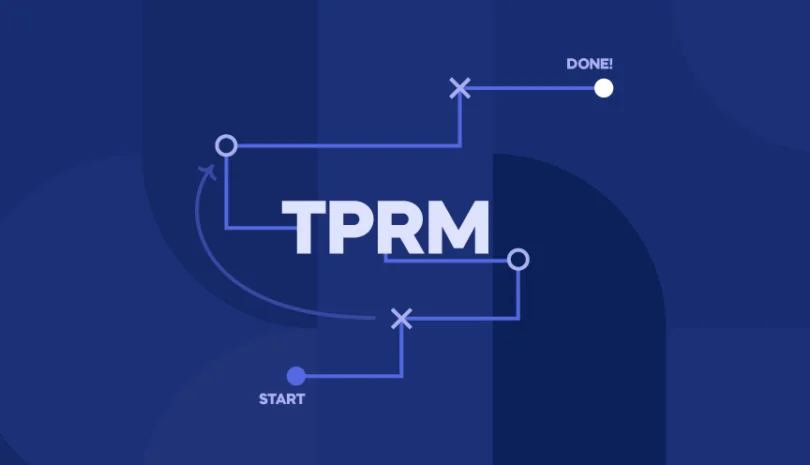94% of monitored cloud tenants were targeted in any given month, according to a 2023 report from ProofPoint in any given month. Over half (62%) were successfully attacked. As businesses increasingly move to the cloud and become more reliant on third-party solutions for their infrastructure and critical applications, these numbers will only rise. Third-party vendors are ideal targets for cybercriminals, because a small company providing a product or service to larger enterprises is often more vulnerable than the primary target.
We’ve seen this strategy with recent large-scale supply chain cyberattacks on companies like Microsoft Exchange, Accellion, SolarWinds, Codecov and more. In light of these findings, how can organizations prepare themselves in the event of a third-party attack? One method of defense is an incident response playbook.
What is an Incident Response Playbook?
An incident response playbook can help your organization respond quickly and effectively in the event of a security incident. It should include industry best practices and describe the duties for all incident roles and responsibilities.
Incident response playbooks benefit your business by:
- Ensuring a consistent process to incident response across the company. Having one central, written manual is essential for ensuring your staff works together effectively and everyone is on the same page. This provides a step by step plan for companies to take in the event of an iniciddent and helps prevent employees from skipping important steps in their incident response.
- Speeding up response time and making them more efficient. This minimizes damage and the duration of the attack and assists in returning operations to normal as soon as possible. As a result, it can help reduce bad public relations and any breach of trust with customers.
- Helping any investigation of your business after an incident. IR Playbooks give you a detailed process of how to understand what may have gone wrong with your security. More importantly, you’ll be more prepared to address a similar security issue better in the future. Having proper documentation of your incident response provides an audit trail which can help your business avoid regulatory fines and other penalties.
- Helping your business meet regulatory compliance. Many regulations such as GDPR, PCI DSS and HIPAA require organizations to have an incident response plan to be compliant. In turn, knowing that an organization meets these regulations and has such a plan in place builds customer trust.
4 Key Steps for an Effective Incident Response Playbook
Most IT and security teams can tailor an incident response playbook template according to the organization’s policies. Using a specific framework such as NIST CSF can help the organization manage cyber risk.
The NIST CSF incident response framework includes four key phases:
Phase 1: Preparation
Establish an incident response team whose job it is to effectively prepare a plan of action, in the event of an attack. Each member of the team should understand his role and responsibility in the event of a cyber incident. The incident response team should include members from management, IT, legal, communications and security teams. Preparation also includes developing an incident response process and ensuring that the team has the most updated tools available for threat detection.
Phase 2: Detection and analysis
Determine whether an incident occurred or there are signs of an impending attack. Dwell time (e.g. the time a bad actor has access to your network or system before your security team identifies them) should be determined as well. Attacks must be documented and prioritized. Depending on the regulations, different parties must be notified (e.g., suppliers, partners, and regulators) within a certain timeframe.
Phase 3: Containment, eradication and recovery
Your incident response team must do whatever it can to resolve the attack and restore operations to normal as soon as possible. The action and role of each team member will be different depending on the type of attack and its impact. For example, the response of team members after ransomware attacks would be different than their response after data breaches. Team members may also need to collect documentation and evidence to prepare for a potential investigation.
Phase 4: Post-incident activity
After an incident occurs, team members should meet to discuss any lessons learned to be better prepared to resolve incidents in the future. The results of this meeting helps review the current procedures or process in place for resolving incidents and decide if they were effective or if they should be changed to prevent similar incidents in the future.
How Panorays Will Help
According to a 2022 report from the Cloud Security Alliance, over 58% of organizations reported their third parties and suppliers were the target of attacks. Panorays’ automated third-party security risk management platform can automatically detect Known Exploited Vulnerabilities (KEVs), Common Vulnerabilities and Exposures (CVEs), data breaches or other vulnerabilities in your third or fourth parties.
Want to learn more about how to automate your third-party risk management process so that you are prepared for the next cyber incident? Open a free account today!
What’s Inside the Panorays Incident Response Playbook?
We’ve also created a series of steps for your organization to develop a high-level incident response plan. The Third-Party Incident Response Playbook delves into why vendor security is imperative for your organization and provides clear and actionable steps to prepare for, respond to and recover from supply chain attacks.
With the Third-Party Incident Response Playbook, you’ll learn:
- Why third-party security is critically important
- How to prepare for a possible supply chain attack
- How to recognize signs that may indicate a possible third-party cyberattack
- How to respond and recover from such an incident
With the best practices and strategies in this guide, you will discover the essential steps you should take to protect your organization and create an effective recovery plan.
FAQs
An incident response playbook defines the actions your organization should take in the event of a specific incident, whereas a plan is applicable to a wide variety of incidents. Incident response plans should help direct a member of the organization who has no prior experience responding to a security incident. Playbooks are meant to be an addition to your security plan as they relate to different types of attacks.
Incident playbooks provide the high-level steps an organization needs to respond to different types and levels of threats or attacks. This includes the roles and responsibilities of all team members for different types of attacks, how to document and prioritize them and the proper procedure for notifying suppliers, third parties and the media. It also aims to minimize the damage and prepare you in advance should a cyber incident occur.
A playbook gives you step-by-step actions to take in the event of an attack. The actions vary based on the type of attack and its impact. Incident response is a broader term that helps your business address the general roles and responsibilities of your team. Playbooks help organizations execute their incident response policies and procedures.
This post was originally published on June 14, 2023, and has been updated to include fresh content.



